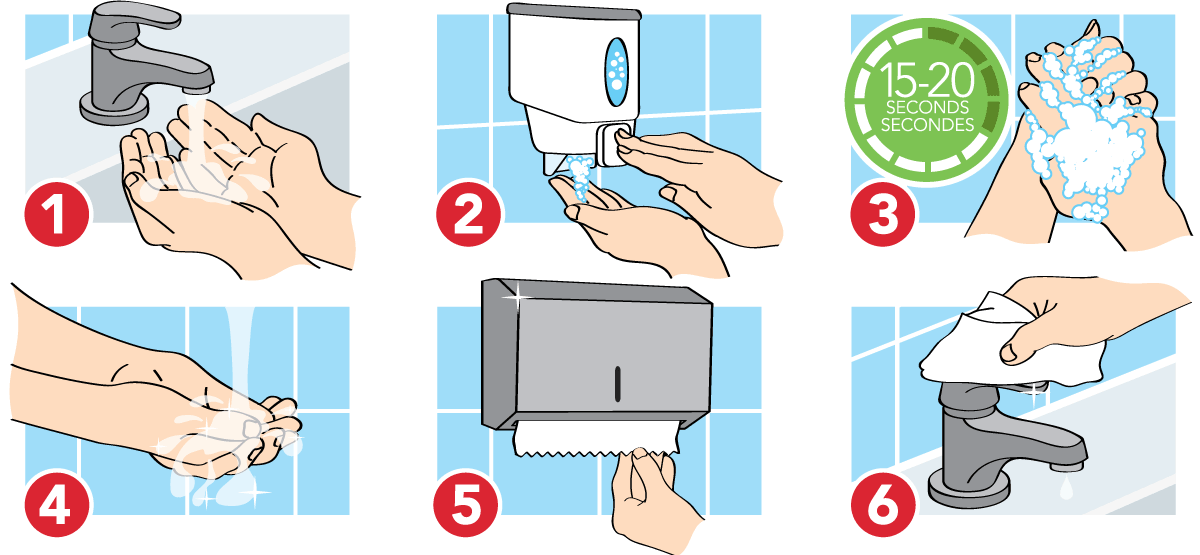
Handwashing
Frequent handwashing is the most effective way to help prevent infections.
Throughout the day, you come in contact with many germs. Contact with germs can happen when you touch contaminated objects or surfaces, such as when you go to the washroom, when you work or play in dirt or sand, when you come in contact with an animal, when you touch doorknobs or keyboards, when you’re sick, or when you handle food. Almost all activities in your day can put you at risk of contact with germs. Handwashing can help protect you from these germs.
Why is handwashing so important?
If your hands are full of germs and you touch your mouth, eyes or nose, the germs can enter your body. By washing your hands, you can prevent germs from spreading to your body and causing illnesses.
Should I use an alcohol-based hand sanitizer?
Under general circumstances, soap and water are sufficient. Alcohol-based hand sanitizers can be used if soap and water are not available. These products should not be used if hands are visibly dirty (e.g. hands are soiled with dirt, blood or other organic materials).
Should I use antibacterial soaps?
The answer is no. These types of soap should only be used in hospitals for special circumstances. There is no need for antibacterial soap.
Tips
- Keep your hands away from your eyes, nose and mouth.
- Assume that contact with any human body fluid is infectious.
- You should wash your hands:
- after blowing your nose or wiping a child’s nose
- after coughing or sneezing
- after visiting or coming into contact with a sick person
- after touching anything that a sick person has touched (e.g. dishes, towels, clothes, trash)
- after using the washroom, changing diapers or helping someone use the toilet
- after handling garbage
- after handling pets
- before eating, preparing food or feeding others
- after touching raw meat, poultry, or fish
- when hands are visibly dirty
Proper handwashing
- Remove any rings. Use warm water and wet hands thoroughly.
- Use liquid or foam soap and lather very well.
- Scrub hands between fingers, under nails and at the base of thumbs for 15 to 20 seconds.
- Rinse thoroughly.
- Dry hands with a single-use towel or hot air dryer.
- Turn off taps/faucets with a disposable paper towel. Protect hands from touching dirty surfaces as you leave the bathroom (e.g. doorknob).

Additional resources:
- Wash Your Hands With Soap (poster)
- Hand Disinfection Method for Hand Sanitizers (poster)
- Cover Your Cough (poster)

